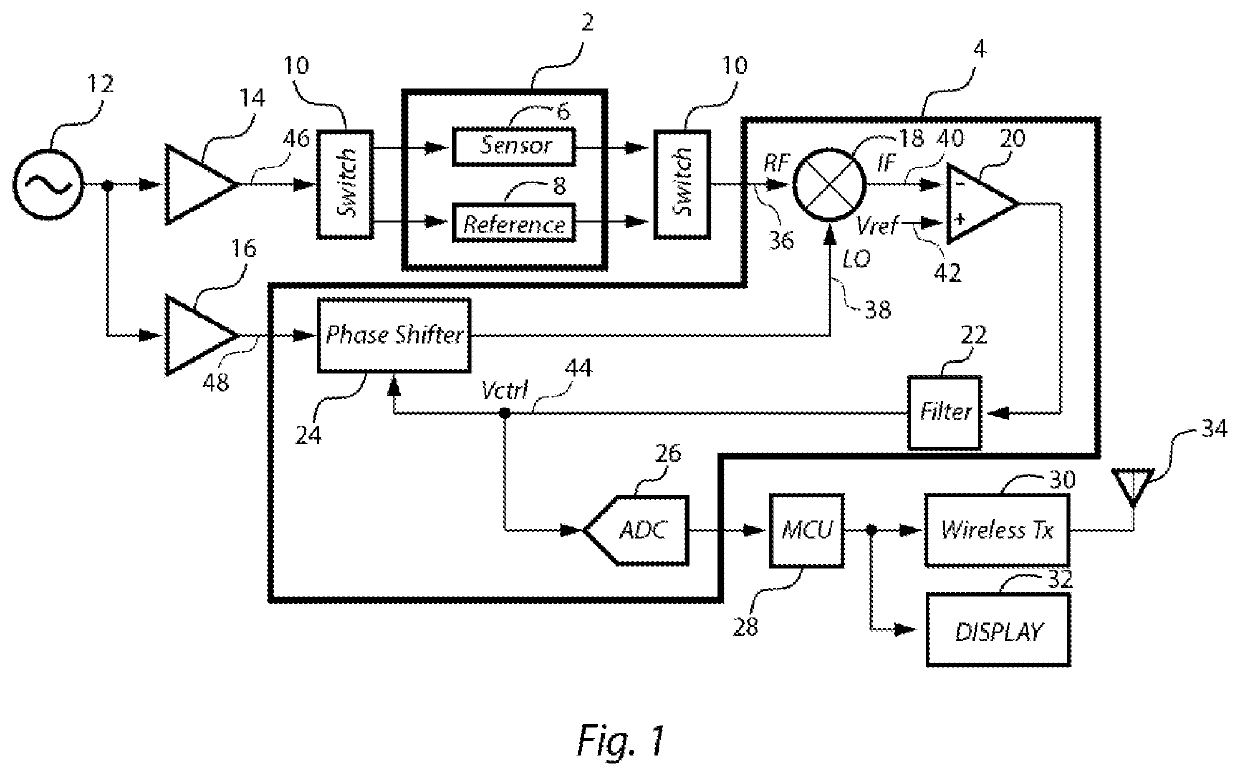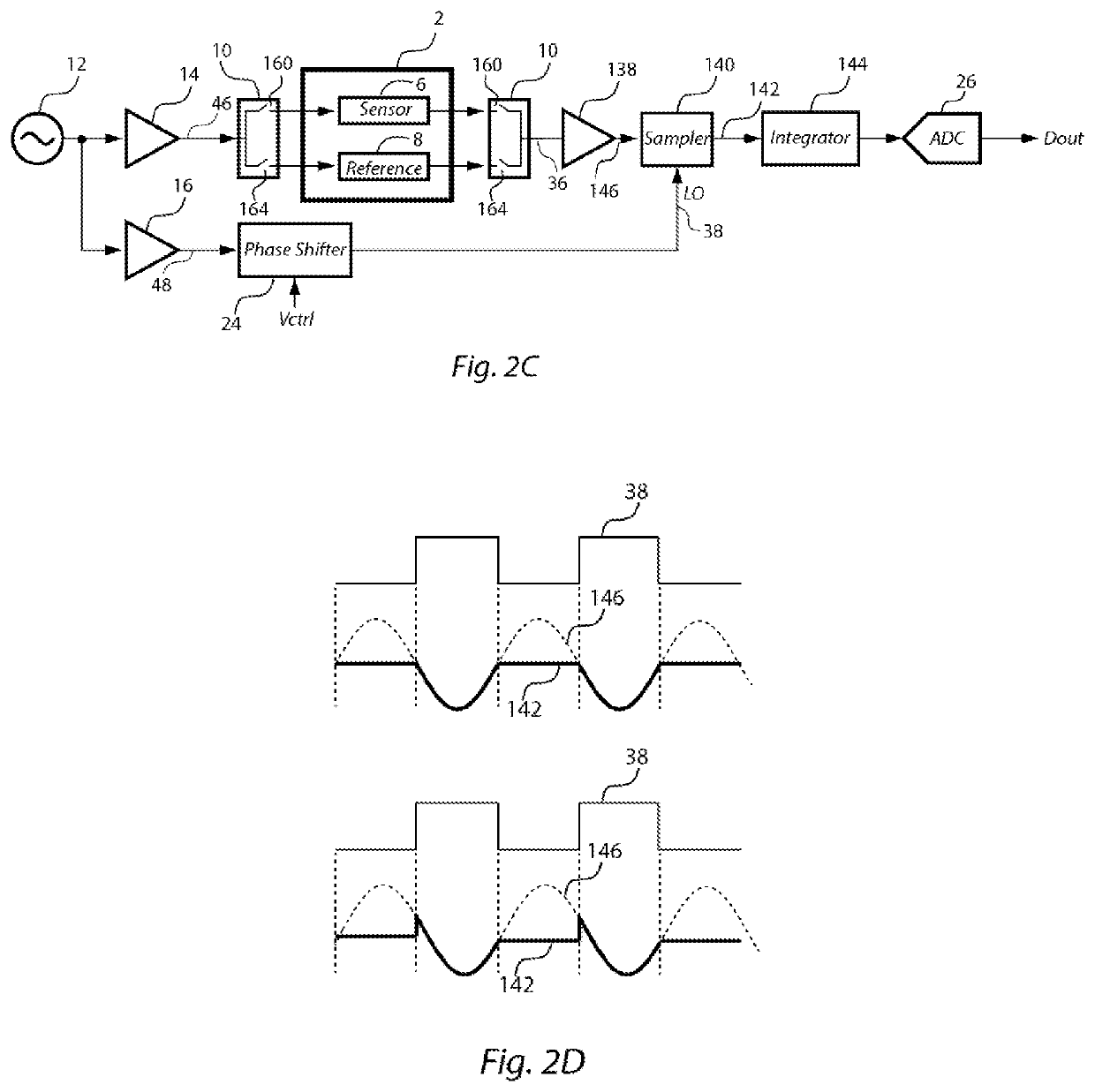Gigahertz frequency fringing near-field biomedical sensor
a biomedical sensor and near-field technology, applied in the field of biomedical sensors, can solve the problems of limiting the form factor limiting the area of the monitoring device, and prior art doppler radar based cardiovascular sensing methods, so as to facilitate the use of wearable biomedical sensors and simplify the industrial design of monitoring devices
- Summary
- Abstract
- Description
- Claims
- Application Information
AI Technical Summary
Benefits of technology
Problems solved by technology
Method used
Image
Examples
Embodiment Construction
[0075]Note that for electromagnetic signals, the relationship between frequency v, with corresponding wavelength λ is c / v, where “c” is a speed of light in a given dielectric material. Thus, since c is a well-known universal constant, once frequency is specified, wavelength is also specified. In this disclosure, the preferred Gigahertz frequencies are typically between 0.5 to 60 GHz, and the preferred wavelengths λ are typically between c / 0.5 GHz and c / 60 GHz, where c is again the speed of light in a given dielectric material.
[0076]Biomedical sensors: For the purposes of this disclosure, the term “biomedical sensor” is used according to the standard definition: “special electronic devices that can transduce biomedical signals into easily measurable electric signals”, and / or “are tools that detect specific biological, chemical, or physical processes and then transmit or report this data”. Thus here, the term biomedical sensor can comprise any of a cardiovascular sensor, pulse rate se...
PUM
 Login to View More
Login to View More Abstract
Description
Claims
Application Information
 Login to View More
Login to View More - R&D
- Intellectual Property
- Life Sciences
- Materials
- Tech Scout
- Unparalleled Data Quality
- Higher Quality Content
- 60% Fewer Hallucinations
Browse by: Latest US Patents, China's latest patents, Technical Efficacy Thesaurus, Application Domain, Technology Topic, Popular Technical Reports.
© 2025 PatSnap. All rights reserved.Legal|Privacy policy|Modern Slavery Act Transparency Statement|Sitemap|About US| Contact US: help@patsnap.com



